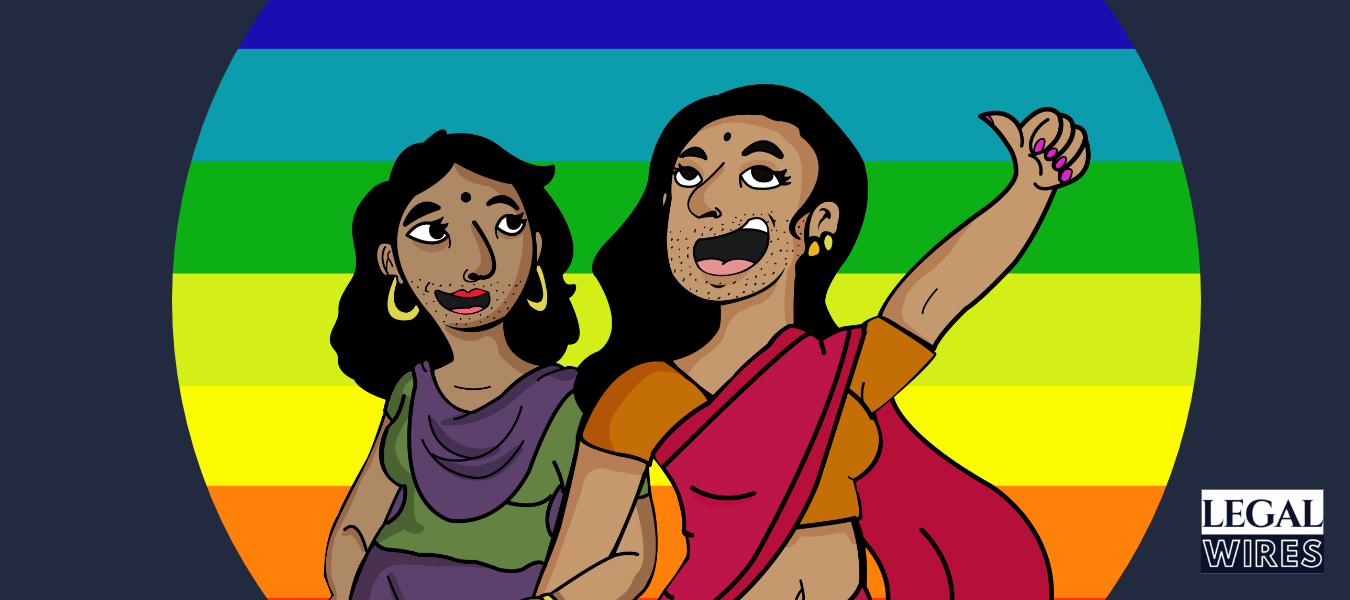After a long-fought battle for their recognition and rights, finally, on April 14th, 2014, the Supreme Court of India in NALSA vs. Union of India legally recognized non-binary gender identities under the umbrella term “transgender persons” as the 3rd gender.

The Transgender Person (Protection of Rights) Act, 2019
After a long-fought battle for their recognition and rights, finally, on April 14th, 2014, the Supreme Court of India in NALSA vs. Union of India legally recognized non-binary gender identities under the umbrella term “transgender persons” as the 3rd gender. The court declared that the fundamental rights of transgender persons must be secured, and they are entitled to the right to life and dignity under Article 21. Further, it directed to the state and central government to take proactive measures in securing the transgender persons these constitutionally guaranteed rights.
Recently on January 10th, 2020 Ministry of Social Justice and Empowerment issued notification for much-awaited The Transgender Person (Protection of Rights) Act, 2019, which was passed in the Parliament on November 26th, 2019 and received presidential assent on December 5th, 2019. The Act was brought in to implement the recommendations of the NALSA judgment.
The Transgender Person (Protection of Rights) Act, 2019, is divided into IX chapters and a total of 23 sections.
The preamble of the Act says:
“An Act to provide for the protection of rights of transgender persons and their welfare and matters connected therewith and incidental thereto.”
Chapter I Preliminary of the act.
Section 2(k), defines “Transgender person” as a person whose gender does not match with the gender assigned to that person at birth and includes trans-man or trans-woman, person with intersex variations, genderqueer and person having socio-culture identities as kinner, hijra, aravani and jogta.
Chapter II provides for prohibition against discrimination.
Section 3 of the act prohibits any person or corporation for discrimination against transgender persons, on any ground related to education, occupation, healthcare, right to reside, right to movement, etc.
Chapter III established the legal recognition of the identity of transgender persons. The transgender persons in order to avail the benefits under this Act are required to necessarily register themselves with the District Magistrate and obtain a copy of the certificate as per the requirement of Section 5.
Sections 4-7 of the Act prescribes the methods for application and issuance of identity certificate. Transgender persons have the right to self-perceived their own gender identity. An application is made to the District Magistrate for issuing a certificate indicating their gender as ‘Transgender.’ If any such transgender person after the issue of a certificate of identity undergoes gender change surgery either to male or female, has to make an application to the District Magistrate accompanied by a medical certificate issued by the Medical Superintendent or Chief Medical Officer that such person has undergone surgery.
Chapter IV enumerates Section 8, which concerns the welfare measures obliged upon the Central and State governments for the protection and empowerment of the transgender community.
Section 8 of the Act assigns tasks for the Central and State governments to formulate steps for secure and active participation of transgender person’s inclusion into society. Hereby ensuring the formulation of proper welfare measures and schemes for them. Steps like rescue, protection, and rehabilitation, participation in cultural and recreational activities as well as conducting transgender sensitive, non-stigmatizing, and non-discriminatory welfare schemes and programs are made mandatory responsibilities for the Central and State governments.
Chapter V provides certain obligations on corporate and persons.
Sections 9-12 of the act lay an obligation on the corporate and persons, for strict no discrimination policy on the ground of employment, recruitment or promotion, and provide necessary facilities for transgender persons. Establishment of a grievance redressal mechanism dealing with complaints regarding violation of the act. Also, it is an obligation on the family to take care of a child born as a transgender person without any kind of discrimination.
Chapter VI provides for education, social security and health facilities.
Section 13-15 of the act ensures that the government institution will provide opportunities for education and sports to transgender. It entrusts the government to take steps to provide health facilities for transgender persons, including separate HIV surveillance centers, sex reassignment surgeries, and provide comprehensive insurance schemes for them.
Chapter VII provides for the establishment of the National Council for Transgender Persons.
Section 16-17 of the act lays the establishment and functions of the National Council for Transgender Persons. The National Council shall be headed by Union Minister for social justice and empowerment and shall have representatives from transgender communities, NITI Aayog, National Human Rights Commissions, etc.
Chapter VIII provides for offences and penalties.
Section 18 of the act recognizes certain offenses against transgender like forced or bonded labor, denial of use of public places, removal from household or village and mental, physical, sexual, verbal, emotional, and economic abuse. Penalties are imprisonment for a minimum of six months up to two years and with fine.
Drawbacks
Though the Act has made an effort to better the conditions of the transgender community, it does suffer from several loopholes and drawbacks:
- The act does not have any provision for self-determination of gender. The transgender community questioned the certificate of identity.
- If an application made under section 5 to the DM stands rejected, there is no room for redressal or appeal provided under the act.
- It did not take affirmative action for the transgender community in employment or education despite the Supreme Court’s mandate in NALSA vs. UOI 2014.
- It enforces a minor’s right of residence, compelling any transgender below 18 to cohabit with their natal family. In contrast, practically, their families are the primary source of gruesome violence against such transgender children. An alternative arrangement or legal sanctity to the traditional culture with reformation must be proposed.
- The act sets out comparatively lesser punishment and sentences for several criminal offences, such as sexual abuse and physical abuse, committed against transgender persons.



